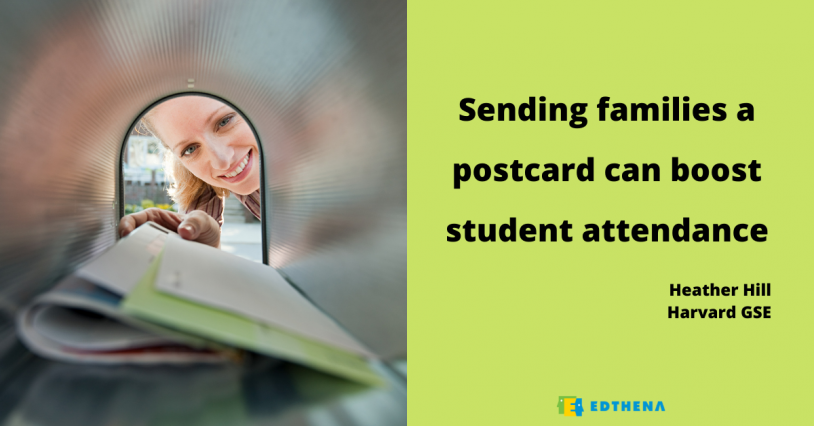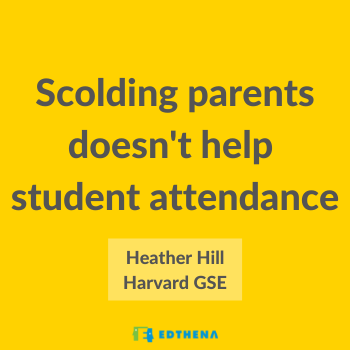Student Attendance Issues? Ditch the Truancy Officer and Send a Postcard Instead
Students may be able to return to the classroom this fall, but are they actually showing up?
Student attendance is often a battle for many teachers and school leaders, but the old ways of improving attendance can lead to limited outcomes despite huge investments of time and effort.
Harvard GSE researcher Heather Hill talked with Adam Geller, founder and CEO of Edthena, for a #PLtogether Lounge Talk, and the two discussed absenteeism and research-proven ways to positively impact student attendance issues.
Watch the interview above, or read highlights of the conversation, including how a postcard can help improve student attendance.
School leaders, stock up on postcards to send families
Truancy officers knocking on doors has been a tried, but not true, method of improving student attendance.
Heather Hill told us another, lower-cost intervention is more effective: a postcard. 
Heather Hill’s review of the existing research found that sending informational postcards to parents is helpful in addressing student attendance.
The studies she reviewed also measured the impact of various types of language on the postcards. Skip the formal and legal, and often negative, messaging to families.
Instead, Heather Hill advised teachers and school leaders to use “really simple language … emphasize parental efficacy in helping their kids get to school … try to educate the parents [why] absences are not great for kids.”
Heather highlighted that what works is clear statements about how often the student is absent.
Try something such as: Your child was absent 5 days in the last 4 months.
If this message seems like a statement of the obvious to a parent, it’s surprisingly not.
Heather commented, “The research shows parents are actually really bad at estimating this particular number.”
Heather Hill herself made this common error. When looking at her own kids’ absences, she saw a number she hadn’t realized would be so large. She reflected, “Well, they were gone one day for this and one day for that … It all adds up and I was not tracking.”
She thinks other parents are likely not tracking either. Parents may think their child has been absent only 3 days, instead of 5 or 6.
Straightforward and positive information will support families in understanding the extent of their child’s school absences and put them in the driver’s seat (perhaps literally) of ensuring attendance.
Stop scolding parents and give them student attendance information instead
Heather gave some background into why the postcard approach works.
She said, “the research that I was finding was that rather than going the more punitive route, what schools should do to get kids back in the classroom is to actually take an informational approach.”

In fact, negative messaging is less effective than simply stating the facts. Even more effective would be to add to that some positivity.
Heather shared, “What works is taking a sort of strengths-based approach with families and saying what we have in place that can get this kid to school more often.”
This more collaborative approach and asset-based mindset combine to support families and invest them in boosting student attendance.
Student learning starts with student attendance
For learning to happen, students have to be in school in the first place.
Heather emphasized, “We need every student, every day.”
Absenteeism is a frustrating issue for many educators, but sharing information with families is a research-backed solution to help student attendance.
Want to hear more of what we’ve learned from Heather Hill’s research? Check out our other interviews with Heather.

